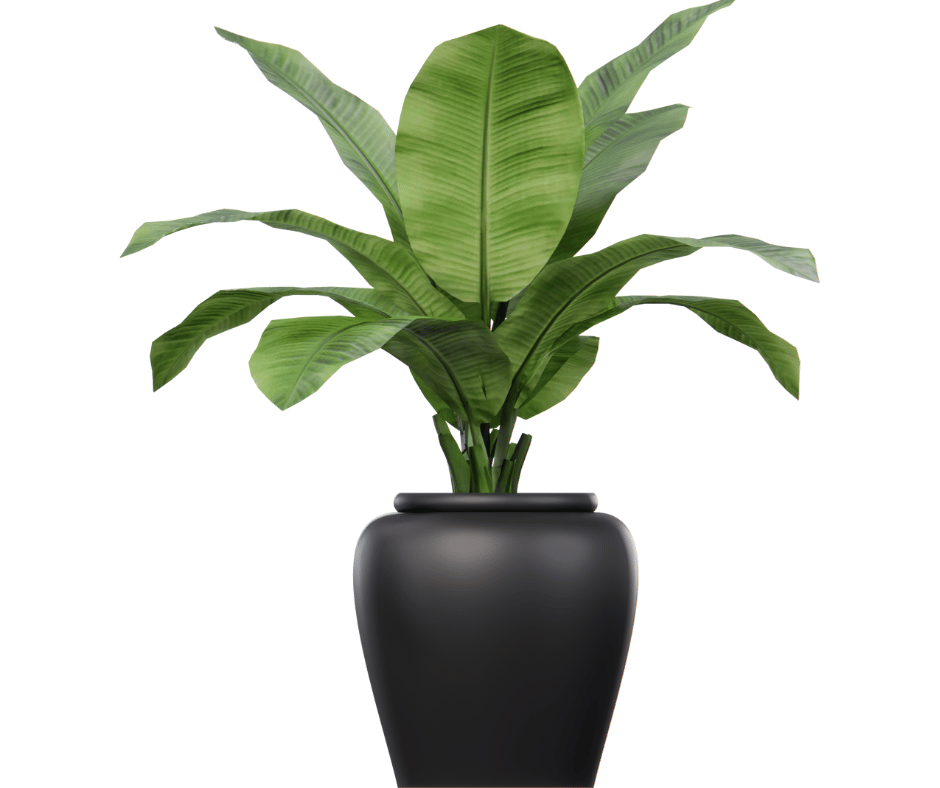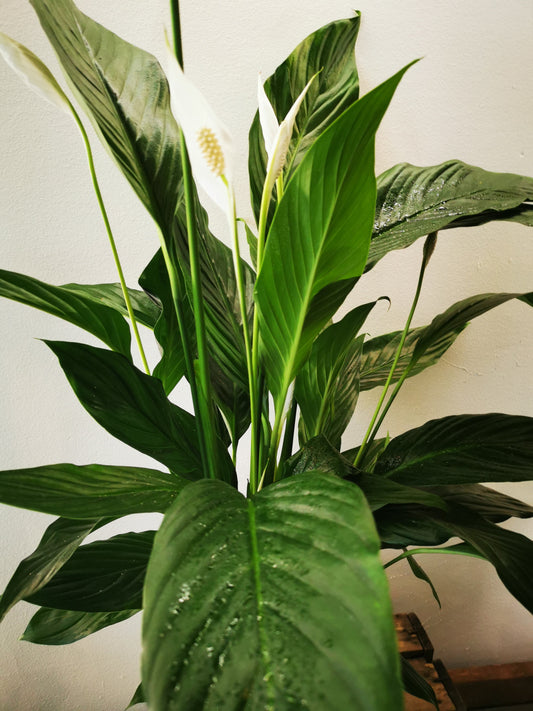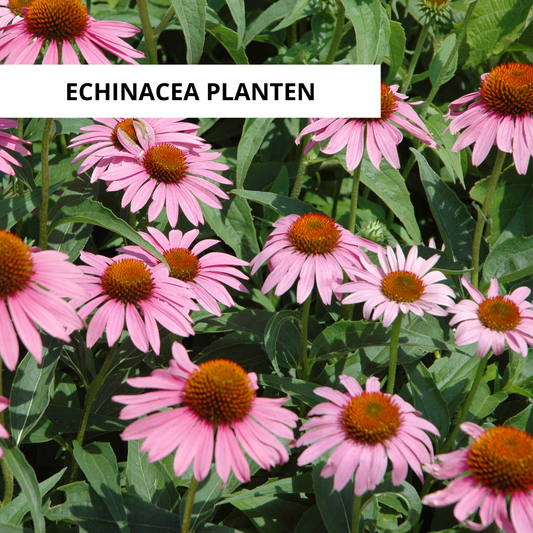
Caring for the banana plant
Share
The banana plant, also known as Musa, is a beautiful and striking tropical plant that can be grown both indoors and outdoors. With its large leaves and exotic appearance, the banana plant adds a touch of lush greenery to any space.
In this blog post, we will cover all the important aspects of the banana plant, from care tips to cuttings and solving possible problems. Discover how to make this tropical beauty thrive and enjoy its lush growth. Let's get started!
Banana plant care
The banana plant needs regular watering to keep the soil evenly moist without becoming soggy. It is important to water when the top layer of soil feels dry, but overwatering should be avoided.
Place the plant in a location with bright, indirect light, avoiding direct sunlight and bright midday sun. Feed the banana plant once every few weeks with a balanced liquid fertilizer specially formulated for foliage plants.
The ideal temperature for the banana plant is between 18°C and 27°C, so protect the plant from drafts and cold temperatures and avoid large temperature fluctuations.
High humidity is beneficial for the banana plant, so regularly spray the leaves with water or place a humidifier near the plant.
Water needs of the banana plant
The banana plant needs regular watering, but it is important to keep the soil evenly moist without allowing it to become soggy. Water the plant when the top layer of soil feels dry, but avoid overwatering.
Light requirements of the banana plant
Place the banana plant in a location with bright, indirect light. It thrives in bright but not direct sunlight. Make sure the plant gets plenty of light, but avoid exposure to bright midday sun.
Fertilization and temperature for the Musa
Fertilization of the banana plant
Feed the banana plant a balanced liquid fertilizer once every few weeks to stimulate growth. Choose a fertilizer that is specially formulated for foliage plants and follow the instructions on the package for the correct dosage.
Ideal temperature for the banana plant
The ideal temperature for the banana plant is between 18°C and 27°C. Make sure the plant is protected from drafts and cold temperatures. Place it in a location with a constant temperature and avoid large temperature fluctuations.
Humidity for the banana plant
The banana plant thrives in an environment with high humidity. To increase humidity , you can spray the leaves with water regularly or place a humidifier near the plant.
The best potting soil for the banana plant
When choosing a potting soil for your banana plant, it is important to find a good balance between moisture retention and drainage. Choose a potting soil that is light and well-draining, such as a mixture of potting soil, peat moss, and perlite or vermiculite. This will allow excess water to drain properly and prevent waterlogging and root rot. You may also want to consider adding organic compost or fertilizer to replenish the nutrients in the soil and promote the growth of your banana plant.
With the right potting soil and regular fertilization, you can ensure that the banana plant gets enough nutrients and stays healthy. It is also advisable to replace the potting soil every few years to maintain quality and drainage.
Keeping the banana plant indoors or outdoors
Keeping the Banana Plant Indoors
If you want to keep the banana plant indoors, choose a location with bright, indirect light. Make sure the plant has enough room to grow and protect it from drafts. Regularly dusting the leaves promotes the health of the plant. We always dust the leaves with the microfiber dusting glove .
Keeping the Banana Plant Outside
In warm climates, the banana plant can be grown outdoors. Choose a location with bright, indirect sunlight and protect the plant from strong winds. In colder climates, the banana plant should be brought indoors during the winter or protected from frost.
Banana plant cuttings
Step-by-step guide to propagating banana plants
Cutting a banana plant is a fun way to propagate your plants. Cut a healthy side branch and plant it in a pot with moist potting soil. Provide enough light and humidity for the cuttings to root.
Care of the cuttings until adult plants
Water the banana cuttings regularly, but avoid overwatering. Keep them in a warm location with plenty of light and protect them from cold drafts. Over time, the cuttings will root and grow into mature plants.
Common Problems and Solutions
Yellow Leaves on Banana Plant: Causes and Remedies
Yellow leaves can indicate over- or under-watering, lack of nutrients or exposure to too much direct sunlight. Adjust watering, provide adequate nutrients and, if necessary, move the plant to a more suitable location.
Droopy Leaves on Your Banana Plant: Possible Reasons and Corrections
Droopy leaves can indicate a lack of water, too much direct sunlight, too little humidity or a pot that is too large. Provide sufficient water, avoid excessive exposure to sunlight, increase humidity and repot the plant to a more suitable pot size if necessary. Need help choosing the right pot?
Spider mites on the banana plant
Spider mites are small, hard-to-see pests that can attack banana plants. Regularly check the undersides of leaves for spider webs and small insects. If necessary, control spider mites with insecticidal soap or neem oil.
Drops on Banana Plant: What Does It Mean?
The appearance of drops on the leaves of the banana plant is a natural process known as guttation . It is not a sign of disease or overwatering. Removing the drops will not affect the health of the plant.
Brown Leaves: Causes and Prevention
Brown leaves can be caused by excessive exposure to sunlight, over or under watering, cold temperatures or nutrient deficiencies. Adjust environmental factors and provide the plant with proper care to prevent further brown leaves.
Crooked growth of the banana plant: Possible causes and solutions
Crooked growth of the banana plant can be due to insufficient light, uneven watering, lack of nutrients or one-sided exposure to light. Provide a balanced growing environment and rotate the plant regularly to promote even growth.
Combating flies in the potting soil of the banana plant
Flies in the potting soil can indicate overmoistened soil or excess organic matter. Allow the soil to dry thoroughly between waterings and reduce the amount of organic matter. In addition, yellow sticky strips or castile soap can be used to catch or combat the flies.
Various aspects of the banana plant
Types of banana plants
There are several species of banana plants, including the Musa acuminata (dessert banana) and Musa ornata (ornamental variety), Musa Cavendish (the one in the supermarket). Each species has its own unique characteristics and requirements.
When to repot the banana plant?
If necessary, repot the banana plant in a slightly larger pot to accommodate its growth. Choose a well-draining potting soil and repot preferably in the spring.
Is the banana plant poisonous?
The banana plant is generally not poisonous to pets and children. However, it is always advisable to avoid contact with the plant and if in doubt, seek advice from a veterinarian or pediatrician.
The difference between the Musa and the banana plant
Musa is the scientific name for the banana plant. It is the genus name for all plants belonging to the genus Musa, including the well-known banana plants that produce bananas.
Difference between the Banana plant (musa) and the Bird of Paradise plant (strelitzia)
Although both plants have large leaves, the banana plant (Musa) and the bird of paradise plant (Strelitzia) belong to different plant families and have different characteristics. The banana plant produces bananas, while the bird of paradise plant has showy flowers.
Also, the banana plant and bird of paradise plant grow differently. The banana plant grows from a stem, while the bird of paradise plant pushes out a new stem for each leaf, which grows between the older leaves.
The banana plant is a beautiful tropical plant that can be grown both indoors and outdoors. By providing the right care, such as giving it enough water, providing the right light, and maintaining the ideal temperature and humidity, you can enjoy lush growth and healthy banana leaves.
With the right knowledge and a few troubleshooting steps, you can tackle any problems and help your banana plant thrive. Also, experiment with cuttings and discover new banana plants in your own garden. Enjoy the beauty and exotic look of this beautiful plant!



